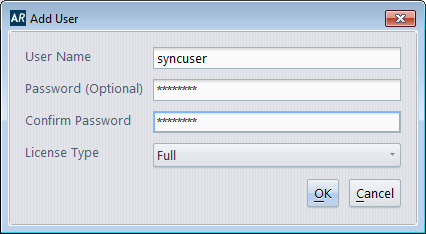Define AccuRev User
-
Define an
AccuRev user that will be used later during the synchronization process. This user must have a password defined (not optional).
 Tip: You should define another user, named triggeruser with password triggeruser used in the Perl script to trigger an on-demand synchronization process. Although you could use the same user as defined above, we recommend using another user within the trigger because this has advantages when debugging the synchronization process.
Tip: You should define another user, named triggeruser with password triggeruser used in the Perl script to trigger an on-demand synchronization process. Although you could use the same user as defined above, we recommend using another user within the trigger because this has advantages when debugging the synchronization process. -
Create one
AccuRev user for each
Endevor user.
For each Endevor user (mainframe userid) who is updating elements in Endevor which are relevant for the synchronization process it is strongly recommended to define a corresponding AccuRev user.
If you don't do this you can still use Enterprise Sync for synchronizing Endevor elements with AccuRev, but you will not see in AccuRev which file changes a specific mainframe user has done in Endevor. This means that the AccuRev Annotate function would contain less specific information.
Following rules apply for defining this user:
- No password is required.
- Any valid AccuRev user name can be used. The mapping to the corresponding mainframe user is done later when configuring Enterprise Sync.